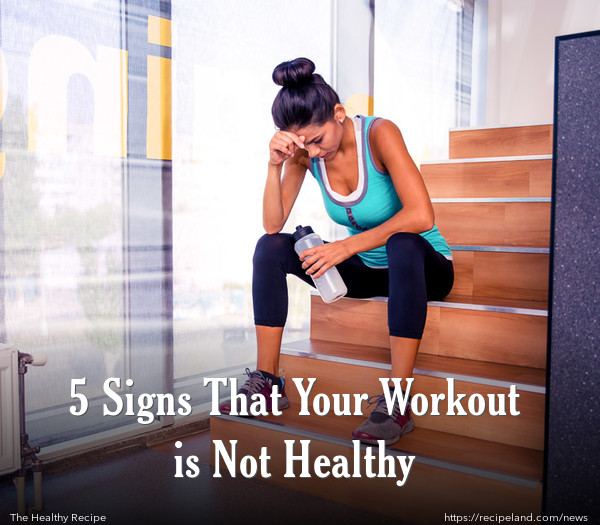It’s important to stay motivated and get your workouts in. However, working out in a way that is healthy and improves your fitness levels is essential—not all workouts will do this.
Feeling pain and hurting is certainly part of working out. But, according to Jessica Matthews, an assistant professor of exercise science at Miramar College in San Diego and senior advisor of health and fitness education at the American Council on Exercise, “It’s true that feeling a little sore after exercise is a good thing. It means your muscles are getting stronger.” But, Matthews warns people that some pain may be a signal of an overuse injury or other problem. It is important to know the difference.
Here are some potential red flags that you should be aware of.
1. Your muscles are shaking after you workout.
If you discover that your arms are literally vibrating after working out or feel like they might give out, this is a sign of muscle failure. “Some quaking is not cause for concern. When you’re too fatigued, you won’t be able to maintain proper form during an exercise. That can lead to muscle strain or tear,” says Matthews. This may put you at risk for dropping a weight or tripping and falling, and you are risking more serious injury.
2. You feel a sudden sharp or radiating pain.
Sure, your muscles should ache after working out. This is a good way to know that you are challenging yourself adequately. But, if you experience an intense pain that appears quickly, you should not continue. Moira McCarthy, MD, an orthopaedic surgeon specializing in sports medicine at the Hospital for Special Surgery in New York City, warns, “Don’t try to push through the movement. That can lead to a muscle or joint injury.”
3. Your foot or knee is swollen after jogging.
When you notice swelling, redness, or a great deal of pain that doesn’t seem to go away, this suggests you might have an overuse injury, like runner’s knee or shin splints. McCarthy suggests, “Take it easy for a few days,” and recommends stretching and warming up more thoroughly before workouts. If the problem persists and the pain does not go away, it might be time to check with your doctor or a physical therapist, who might be able to help you change your form and strengthen weaker areas to help prevent injuries.
4. Lingering soreness from workouts.
If you are finding it difficult to climb the stairs three days after a big workout, then you might have overdone it. Although some stiffness is expected from big workouts, delayed onset muscle soreness (DOMS) can be caused by tiny tears in the muscle tissue. As your body works to repair the muscles, it will make them stronger. But, if your DOMS does not go away in 24-48 hours, then, according to Matthews, “It means that you pushed yourself too far, too soon. If you try to exercise with a limited range of motion, you may wind up favouring one side or compromising the movement. Over time, that can lead to an acute injury.” Wait until the pain goes away before hitting the gym hard again.
5. You have shoulder, knee or hip pain during a lift or press.
When you have pain with a specific movement, it could be a sign that something is wrong. For sharp pains, be sure to have an orthopaedic specialist take a look. With dull pain, McCarthy recommends, “Make sure that you’re warming up and stretching properly, and hydrating during exercise. Don’t try to keep up with the others.” Using lighter weights and slower movements can also help, as well as making sure your form is correct.
Make sure you are getting enough physical activity, but make sure you are getting the right kind and the right amount, and be aware of the signs of injury or overuse.










Comments